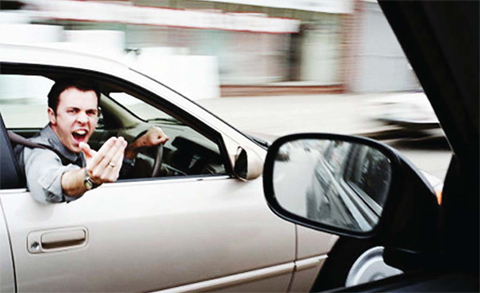Road rage is a term used describe angry, hostile reactions when driving that are directed towards other drivers.
Spending hours stuck in traffic may take a toll on your health and happiness, and can lead to road rage. Road rage is a term used to describe angry, hostile reactions when driving that are directed towards other drivers. That, in turn, may raise the risk of having a heart attack or physically assaulting another motorist. Road rage is on the rise all over the world, so Kuwait Times spoke to a psychologist to give readers the best tips on how to reduce the stress, anger and anxiety when their cars are stuck in a traffic jam.
"Overcrowding of roads and highways is one reason people resort to road rage. Human nature reacts defensively when we feel that our personal space has been invaded. The feeling of anonymity and security behind the wheel makes an otherwise timid driver lose his temper over traffic-related situations, and induces behaviors like obscene or provocative gestures, yelling, cursing and tailgating," Consultant Psychologist Abdullah Al-Hamadi told Kuwait Times.
First of all, the driver should check his mood before driving, he said. If you leave your home or workplace in an angry, irritated or otherwise upset mood, there's a good chance that a minor traffic incident can set you off. Hamadi said that to control an angry, adrenaline-driven response, the driver should focus on breathing. "Pay attention to each breath as it goes in and out. Maintain a normal breathing rhythm, as it relaxes the body. Inhale and exhale calmly - this is a proven technique for eliciting relaxation. It's also simple enough to do behind the wheel," he noted.
"The driver should not personalize an incident - you must refuse to allow another driver - someone whom you do not know and will probably never see again - to dictate your mood and determine the quality of your day," Hamadi advised.
He said that the best solution to avoid the worst rush-hour traffic is by leaving home an hour earlier. "If people are wary about arriving early for work, they can have a cup of coffee or go to the gym before work. Avoid peak traffic times - this will vary from one city to another, but traffic is generally at its worst between 7:00 and 10:00 am and from 1:00 to 7:00 pm."
Listen to the radio
Hamadi remarked that social media has done a good job to help pass a driver's time while waiting. "The driver can tell himself it's a welcome respite from work. It is also a golden opportunity to listen to your favorite radio show or the soundtrack of your favorite movie," he said.
A 2007 report by the National Centre for Biotechnology Information on the psychology behind road rage stated that previous literature had demonstrated "an association between road rage and psychiatric morbidity". Also, a 2012 study by Washington University in St Louis noted that being exposed to the daily hassles of traffic could lead to higher chronic stress.
Hamadi advised drivers to not expect to eliminate every negative feeling. "If you feel a twinge of worry over being late, notice and accept the feeling nonjudgmentally, and then let it go. Turn your awareness to what's happening in the present moment. Listen to soothing music - it is a good way to relax when you start to experience road rage. Music can help you calm down and focus on getting to your destination safely."
For some people, hand yoga is an excellent way to relieve stress. Hand yoga is the act of stretching and relaxing the muscles of the hands. "Spread your fingers and stretch out both hands as much as possible. Hold this position for a few seconds, then release it. Curl each finger individually into your palm, pushing gently with your thumb. Hold, then release. Flex your wrists and bend each knuckle individually to "shake out" the muscles and joints," he explained.
Also, making eye contact is a sign of aggression. "Whether someone is honking their horn, flashing you with high beams or just driving aggressively, make sure you avoid eye contact with that person. Experts warn that making eye contact with an enraged driver can be seen by that person as a sign of aggression, and could result in an attack," Hamadi cautioned.
By Faten Omar






